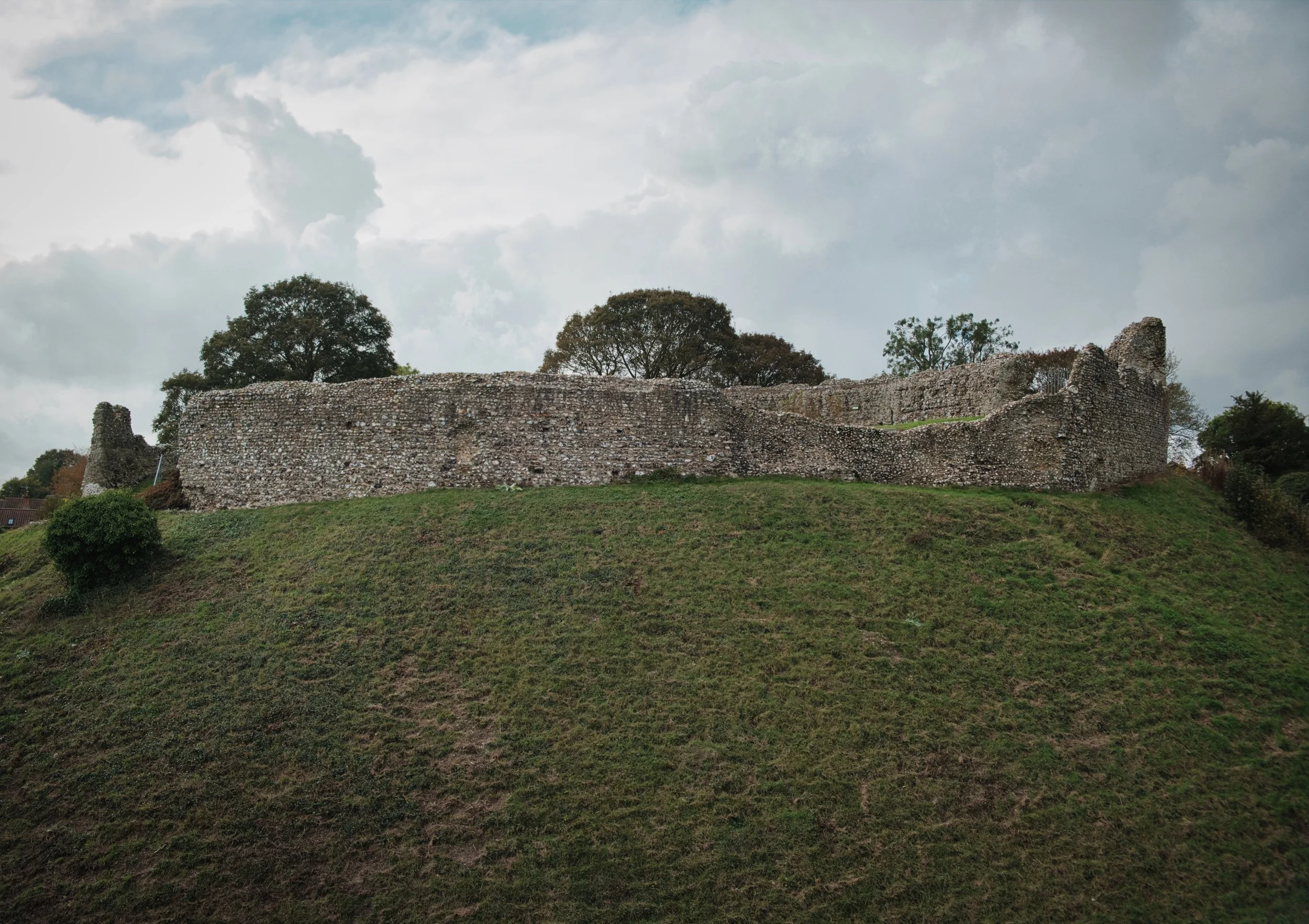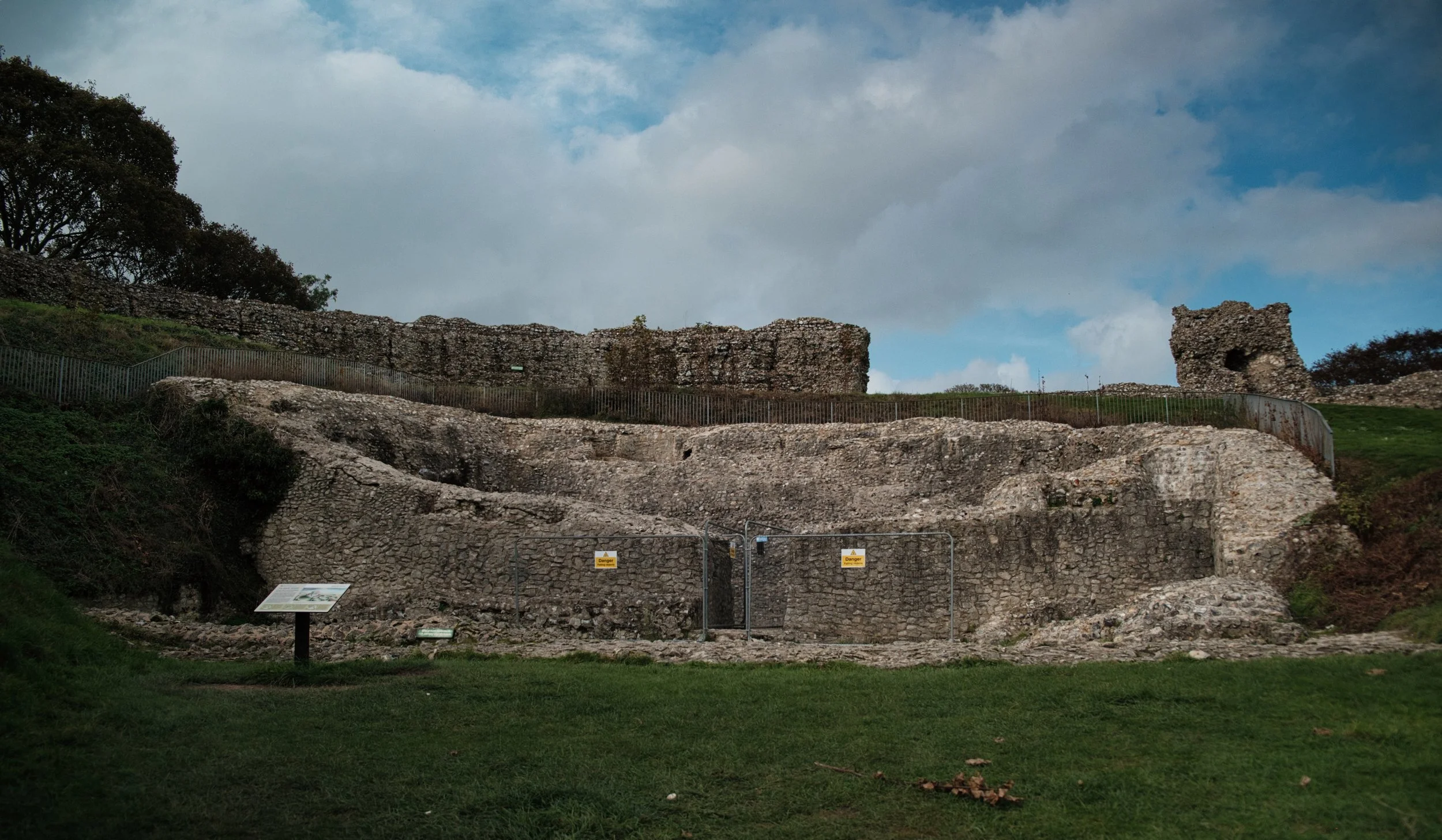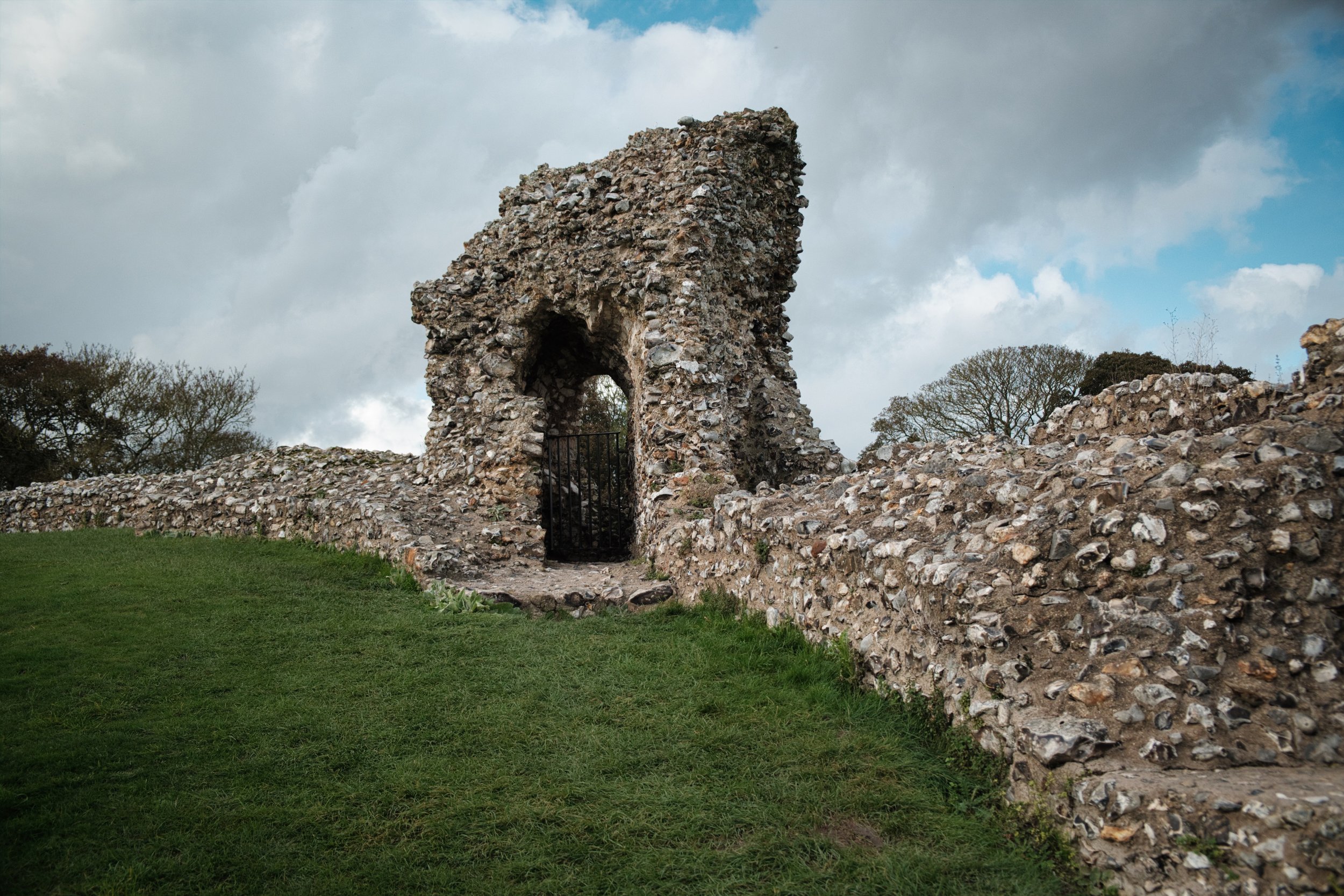Castle Acre Castle
Castle Acre Castle is located in Norfolk, just a few miles north of the town of Swaffham.
Whilst not much of the castle keep exists beyond the foundations, the inner bailey wall is still an impressive structure, as are the earthworks of the outer bailey.
The walls of the inner bailey
The castle dates back to the 1070s, and was built by William de Warenne, Earl of Surrey, who was a Norman knight who fought alongside William the Conqueror at the Battle of Hastings.
His reward for his endeavours was lands in Lewes in Sussex, Conisbrough in Yorkshire and Acre in Norfolk.
The original structure was likely a timber motte and bailey castle.
After the civil war broke out in 1135 (known as ‘The Anarchy’) the third earl, also called William, began to reinforce the castle, adding walls around the bailey, and starting to construct a stone keep.
Remains of the stone keep and inner bailey walls
Soon after the castle was built, a small order of Cluniac monks were given the small church which was built in the outer bailey. The second earl granted them more lands, and a priory was founded a short distance from the castle. Check out my page covering the priory here.
A planned settlement was formed next to the castle, surrounded by its own earthworks. The north gate of these defences can still be seen in the village.
The bailey gate, Castle Acre
The castle remained in the hands of the de Warennes until 1347 when it passed to Richard Fitzalan, the Earl of Arundel. However, fifty years later the fortifications were in ruins.
The settlement built within its defences remained, but was not large enough to become a borough, however the Priory did prosper - up until the Dissolution of the Monasteries, when it suffered the same fate as other ecclesiastical establishments.
Thomas Howard, the Duke of Norfolk, leased the ruins of the castle and the priory after 1537. Eventually the estate was bought in 1615 by Sir Edward Coke, a prominent lawyer. It remained in his family until 1971, when it was placed in the guardianship of the state.
Walls of the inner bailey
Castle Acre Castle is managed by English Heritage, and is free to enter. It is highly recommended to pair a visit with the Priory, which has extant stunning medieval architecture, and expansive ruins to explore.




